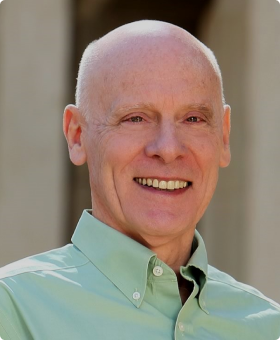This article was originally authored by Dr. Hugh Ross and is republished here with permission from Reasons to Believe, a ministry dedicated to integrating science and faith. All rights reserved by the original publisher. To explore more resources, visit their website Reasons to Believe.
Is the universe fine-tuned for human existence? If so, how do we know it and is such design intentional?
One definition of the anthropic principle states that humanity’s existence places severe constraints on the physical constants, structure, and history of the whole cosmos, specifically on the Milky Way Galaxy, the solar system, Earth, and early life.[1] Another definition explains that the presence of intelligent observers requires multiple characteristics of the universe and the laws of physics to fit within very narrow fine-tuned ranges.
Fine-Tuning and the Fine-Tuner
Fine-tuning requires a shaping source. The greater the degree and pervasiveness of fine-tuning, the more capable must be the fine-tuner. Evidence of cosmic fine-tuning for humanity holds deep personal and philosophical significance.
If observed fine-tuned designs prove insignificant, one might infer no intentionality. But if fine-tuning is multifaceted and essential for human existence, the source must be more than a mindless force. The more purposeful and detailed the design, the more it reveals about the fine-tuner’s nature.
Is Cosmic Fine-Tuning Real?
Not everyone agrees that cosmic fine-tuning is real. Some argue it reflects anthropomorphism or anthropocentrism, like a puddle that assumes the hole it fits into was made just for it.
This “puddle argument” dates back to Douglas Adams and remains popular today. I encountered it in a peer review of my paper, “Black Holes as Evidence of God’s Care.” In that work and in my book The Creator and the Cosmos, I cite rebuttals from philosophers William Lane Craig[3] and Richard Swinburne.[4]
Problems with “Puddle Thinking”
A recent paper by Australian astronomers Geraint Lewis and Luke Barnes presents the most accessible rebuttal to the puddle analogy.[5] They name the puddle Doug, who perfectly fits his hole and assumes intentional design. Yet water, gravity, and shape dictate that any hole would fit Doug. They conclude that physical life, unlike a fluid, cannot adapt to any universe. Even slight changes to the universe’s characteristics would eliminate the possibility of life.
For human life and civilization, these constraints are exponentially more fine-tuned, showing that the universe’s design parameters are extraordinarily specific.

Image credit: Hugh Ross
Characteristics of the Fine-Tuner
Lewis and Barnes conclude that the puddle argument’s flaws mean cosmic fine-tuning cannot be dismissed. Such features demand attention. They propose that the fine-tuner could be a divine mind or an intelligent programmer.
The degree of fine-tuning reveals the fine-tuner’s intelligence and purpose. Examining the structure of our galactic neighborhood, solar system, and planet shows the precision of this tuning and points to a Creator who cares deeply for humanity.
Further exploration of cosmic fine-tuning reveals multiple purposes behind the universe’s design. In my book Why the Universe Is the Way It Is, I identified 11 distinct purposes. Now, several more can be added. Each purpose reflects the attributes and intentions of the divine mind behind creation.
Given the scale and precision of the fine-tuning across cosmic, galactic, and planetary systems, it is clear that the universe was designed with humanity in mind, pointing to the Creator God of the Bible.
Endnotes
- Brandon Carter, “Large Number Coincidences and the Anthropic Principle in Cosmology,” IAU Symposium 63 (1974): 291–298; John D. Barrow and Frank J. Tipler, The Anthropic Cosmological Principle (Oxford University Press, 1986).↑
- Hugh Ross, The Creator and the Cosmos, 4th ed. (Covina, CA: RTB Press, 2018), 153–163.↑
- William Lane Craig, “Barrow and Tipler on the Anthropic Principle vs. Divine Design,” British Journal for the Philosophy of Science 38 (1988): 389–395, doi:10.1093/bjps/39.3.389.↑
- Richard Swinburne, “Argument from the Fine-Tuning of the Universe,” in Physical Cosmology and Philosophy, ed. John Leslie (New York: Macmillan, 1990), 165–166.↑
- Geraint F. Lewis and Luke A. Barnes, “The Trouble with ‘Puddle Thinking’: A User’s Guide to the Anthropic Principle,” Proceedings and Journal of the Royal Society of New South Wales 154, no. 1 (June 2021).↑
Go Deeper

Dr. Hugh Ross
Hugh Ross is the founder and senior scholar of Reasons to Believe, an organization dedicated to communicating the compatibility of science and the Christian faith. While in college, Hugh committed his life to Jesus Christ after his study of cosmology convinced him of the existence of a Creator, specifically the God of the Bible. Hugh holds a degree in physics from the University of British Columbia and a PhD in astronomy from the University of Toronto. After five years on the Caltech faculty, he transitioned to full-time ministry and still serves on the pastoral team at Christ Church Sierra Madre. His writings include journal and magazine articles, hundreds of blogs, and numerous books-Why the Universe Is the Way It Is, Improbable Planet, Designed to the Core, and Rescuing Inerrancy, among others. He has spoken on hundreds of university campuses as well as at conferences and churches around the world and participates in the weekly Stars, Cells, and God podcast.


.webp)
.webp)
.webp)
Leave a comment